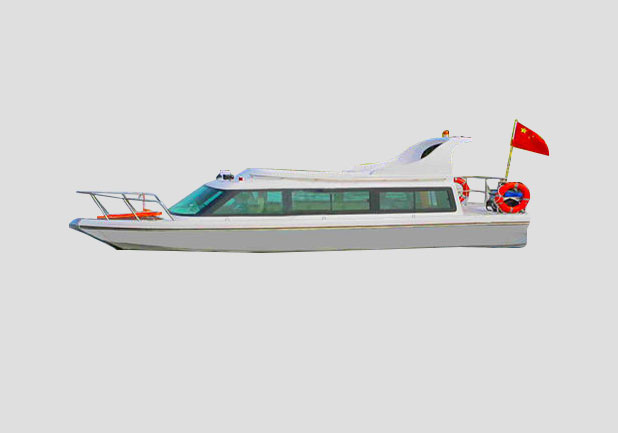Mobile Water Quality Flow Monitoring System
I. Hull Part:
1. Captain: 13.8 meters; 2. Total width: 3.36 meters; 3. Shape depth: 1.3 meters
4. Crew: 12 + 2; 5. Speed: 45-60 km/h
6. Navigation Area: Inland River Class A and B; 7. Hull Material: FRP Material
8. Hull life: 10 years
9. Ship weight: 2.3 tons (3.2 tons total weight of instrument sensors)
2. Hull power part:
1. 115 Mercury boat propellers in the United States;
2. Motor model: 115EL (XL) PT EFI SP (seawater engine); Engine type: 4-stroke, 4-cylinder; Horsepower: 115 horses
3. Emission: 1741cc; Fuel delivery: EFI; Fuel: unleaded gasoline (87 octane number)
4. Oil Supply: Wet Lubrication; Starting System: Electric Starting
5. Manipulation: Front Manipulation, Remote Control Box; Cooling System: Water Cooling
6. Shift: F-N-R (right remote control box)
7. Maximum fuel consumption: 36 liters per hour; External tank: 24 liters (ships need to design built-in tank)
8. Tail Plate Height: 635 mm Lengthened Axis; Weight: 200 kg
9. Volume: 1.5 square
3. Main technical parameters:
Automatic Flow Monitoring
Performance Index of ADCP Equipment-Walking ADCP
A. Characteristic of Walking ADCP
(1) The traditional measurement method is static. Whether it is manual ship measurement, cable measurement, etc., the instrument is always fixed on the vertical line for measurement, while ADCP is a dynamic measurement method. It is not limited by the width of the river when measuring the ship's motion.
(2) The traditional method usually requires the flow section to be perpendicular to the river bank, while the ADCP measurement process does not require the flow section to be perpendicular to the river bank, and the ship's trajectory can be diagonal or curve.
(3) Suitable for patrol, single working mode (suitable for all rivers; including the Yangtze River 80 meters deep water), measuring time is short, only a few minutes; flow can be measured in shallow water, the minimum depth can be 0.3 m, the maximum depth can be 100 meters; the minimum velocity can be 1 cm/s; three-dimensional velocity components can be measured.
B. Composition of Walking ADCP System
The cruise ADCP system consists of the following components:
(1) Walking ADCP Probe: Intelligent Multi-frequency FM Walking ADCP
Working frequency: 0.5MHZ~2MHZ
(2) Computer terminals:
(3) Matching software: Chinese interface, the original software can output directly after the measurement without any other post-processing software, including the standard national standard "test results record table" and the hydrological Southern film "measured flow results table".
(4) Configuration of GPS
C. Walking ADCP Function
The system can achieve the following functions:
(1) Conditional real-time monitoring and calculation of local and total discharge of rivers, estuaries, natural streams and hydraulic channels can be carried out.
(2) The flow can be measured by uninterrupted and continuous navigation from any path along the river bank to the opposite bank.
(3) At the same time, the velocity profile of the cross section, the river cross section, the undisturbed flow field, the generation of measurement reports and the automatic intelligent switching of measurement frequency are measured directly.
(4) Automatically and intelligently adjust and switch the working mode according to the water depth and flow velocity, and the working frequency is obtained.
The best accuracy of flow measurement is obtained.
(5) It has the function of layered velocity measurement, which supports the measurement of "velocity", "flow rate" and "flow direction" at the designated depth end.
D. Walking ADCP parameters
1.1 Section Range and Depth
Frequency: 0.5MHz~2MHZ and Automatic Broadband Adjustment
1.1.2 Special central sounding: no less than 100m
1.1.3. Blind area: no less than 0.1M
1.1.4. Working mode: Intelligent FM
1.2 Flow Rate Specification
1.2.1 Accuracy: Not inferior to 0.25%+2.0mm/s
1.2.2
1.2.3 Maximum Flow Velocity: Not inferior to + 10.28m/s
1.2.4 Flow velocity stratification under water surface: more than 160 layers, 0.02m-4m per layer
1.2.5 maximum expiratory frequency: no less than 2/s
1.2.6 A layer can be selected arbitrarily to measure water velocity and flow rate.
1.2.7 Velocity profile greater than or equal to 80 m 1.3 power consumption
1.3.1 MPT: 20 W
1.3.2 Low Power Transmission: 6 W
1.3.3 Receiving Mode: 0.9 W
1.3.4 Dormancy mode: 2.5 mW
1.4 Hardware
1.4.1 Sensor: No less than 5 beams
1.4.2 Beam Angle: Velocity beams greater than or equal to 22 Degree Beam Opening Angle: 1.4 Degree
1.4.3 Shell Material: Anodic Alumina or Engineering Plastics; Optimum Aluminum Alloy
1.4.4 Communication: RS232 or RS422, with radio stations
1.4.5 internal memory card: no less than 8GB
1.4.6 Extensible Work Mode: Continuous Mode, Hibernation Mode
1.5 Bottom Tracking
1.5.1 Maximum Depth: No less than 100m
1.5.2 Minimum Depth: 0.2m
1.5.3 Minimum discharge water depth is less than or equal to 0.3m; shallow water unit length is 2cm.
1.5.4 The maximum discharge depth without GPS is less than or equal to 100m.
2. The instrument has no less than 1GB of large capacity memory and flow calculation and processing module. The instrument automatically calculates flow and output flow data without external software involved in flow calculation. In the test process, with the outside
The control software can still measure the flow normally when the communication is disconnected.
3. Instrument built-in temperature, compass, inclinometer
1) Temperature sensor: accuracy: +0.1 C, resolution: 0.01 C.
2) Compass and inclination sensor: measuring range: +360, accuracy: heading better than +2 pitch/roll better than +1.
4. The software can run under windows, which is easy to operate and can display track, terrain and flow at the same time.
Data or charts of velocity profiles, flow distribution, velocity stratification, etc.
5. The software and ADCP have the function of measuring laminar velocity and supporting multi-format data processing to meet the special needs of researchers. Support ASCII code text file output, can use Excel to open the file.
- prev:none;
- next:none;
